Argentina, Part 6: Bahia Blanca, Azul and Buenos Aires
— Argentina — 7 min read
February 4 - 16, 2011
The fun, adventure part of riding in Latin America was over and now it was a matter of getting to the end in Buenos Aires and planning the exit from this continent onwards to Africa.
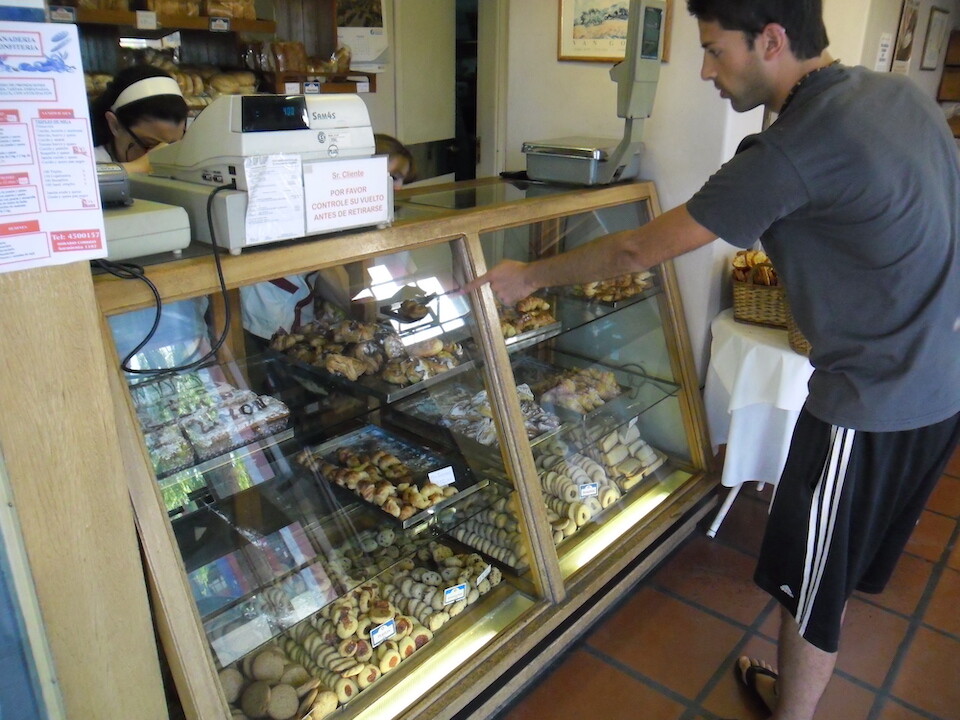
I stayed with Walter in Bahia Blanca and we're partaking in a daily habit of Argentines, the purchasing of 'facturas', which are baked snacks that go along with drinking maté.
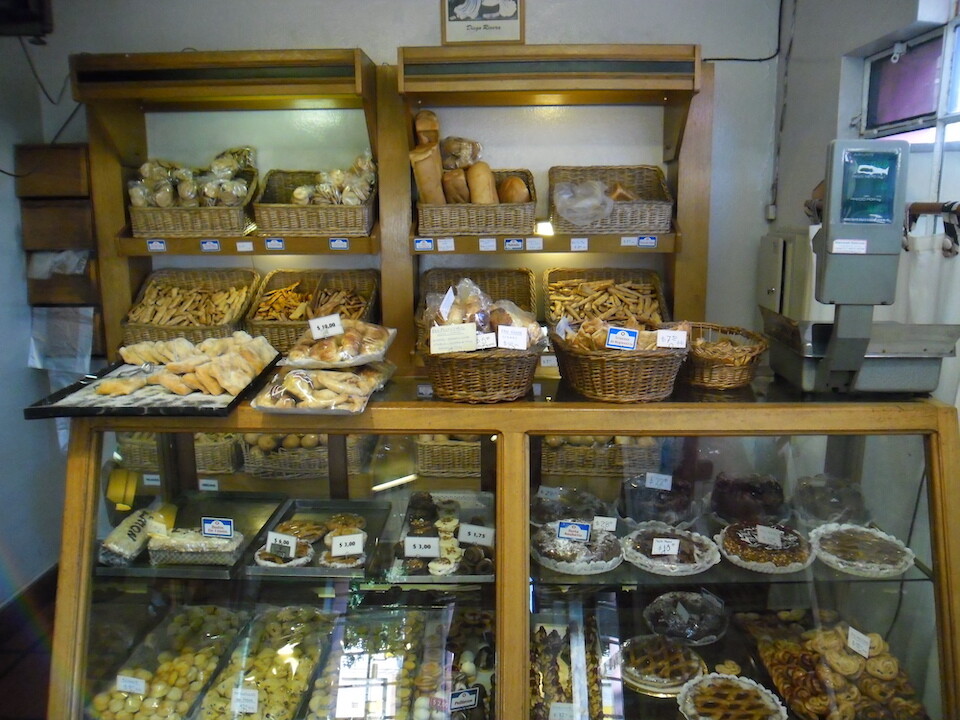
All sorts of savory and sweet treats.
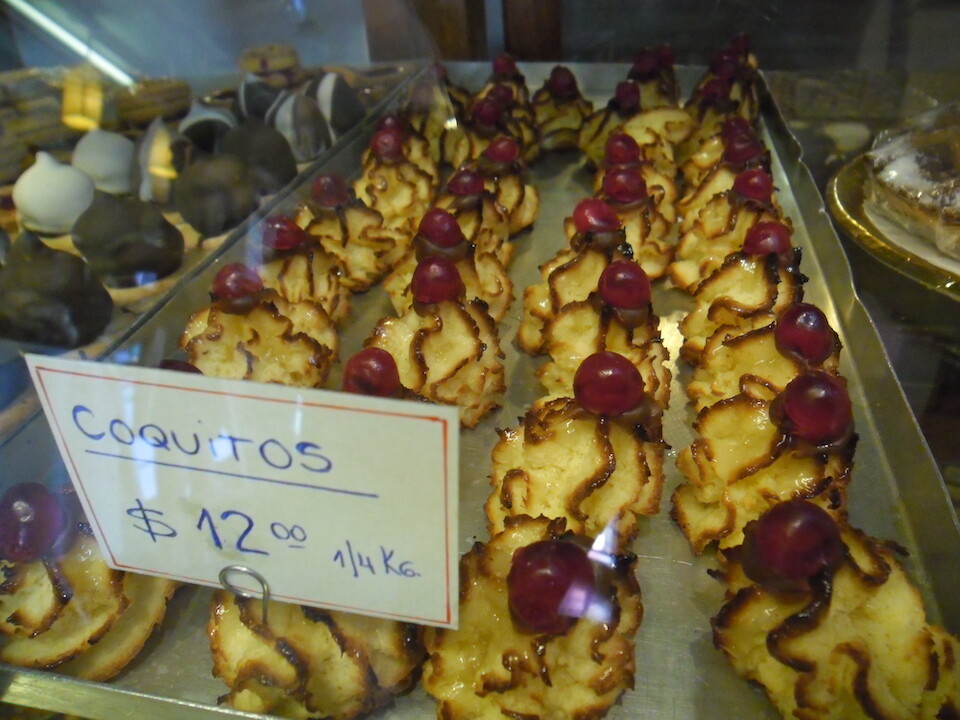
Yum!
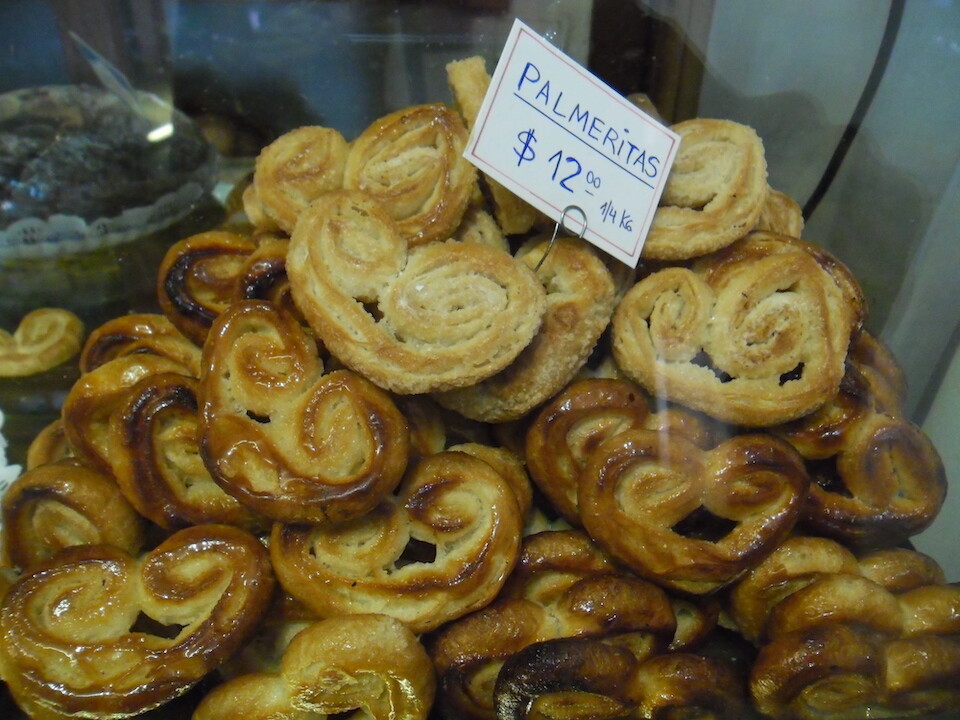
I seen these kind of cookies in a variety of countries. They all taste great with melted sugar on top.
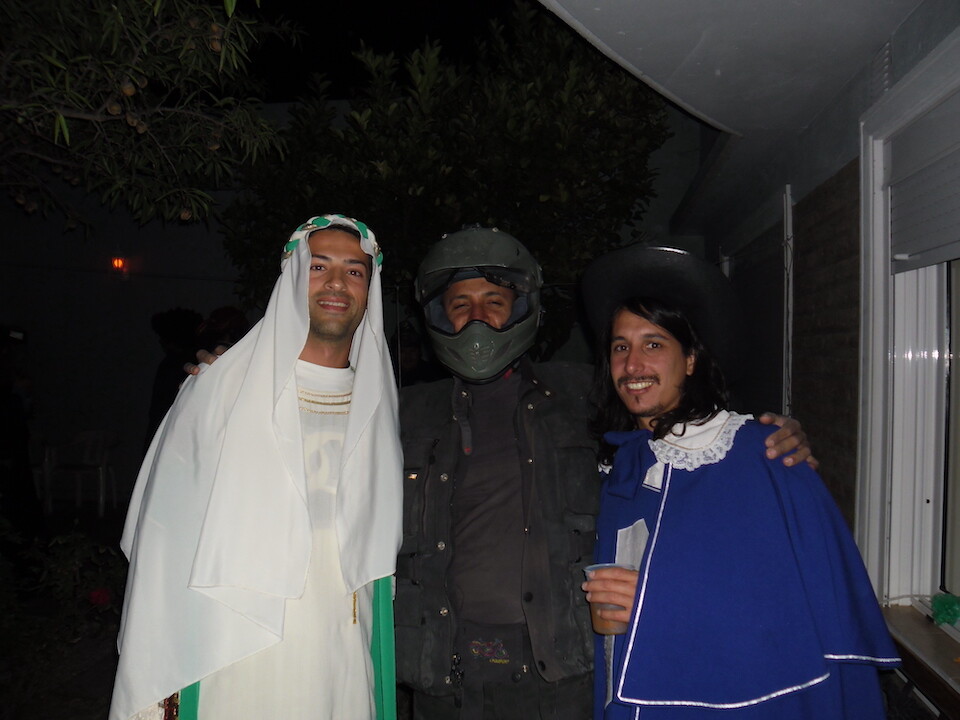
Walter said there was a costume party in town and said my biking gear looked ridiculous enough to pass for a costume. Sounds good to me. He's going as an Arabic sultan and his friend went as D'artagnan. Argentines are a pretty conservative people and Walter said it was a rare event for people to put on costumes and let loose.
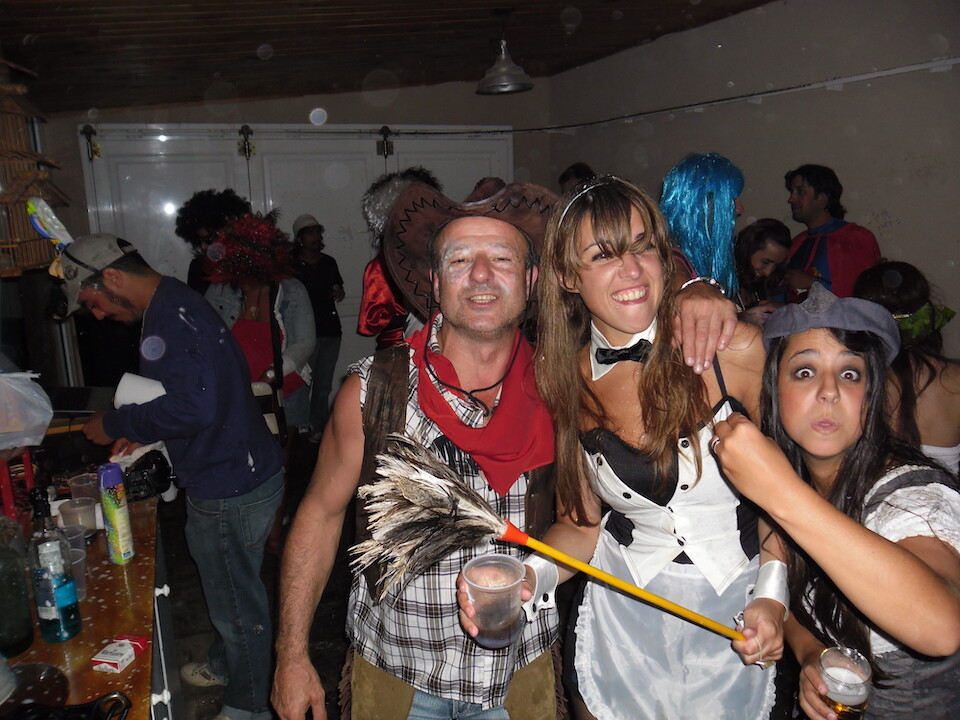
There were the usual naughty maids and cowboys.
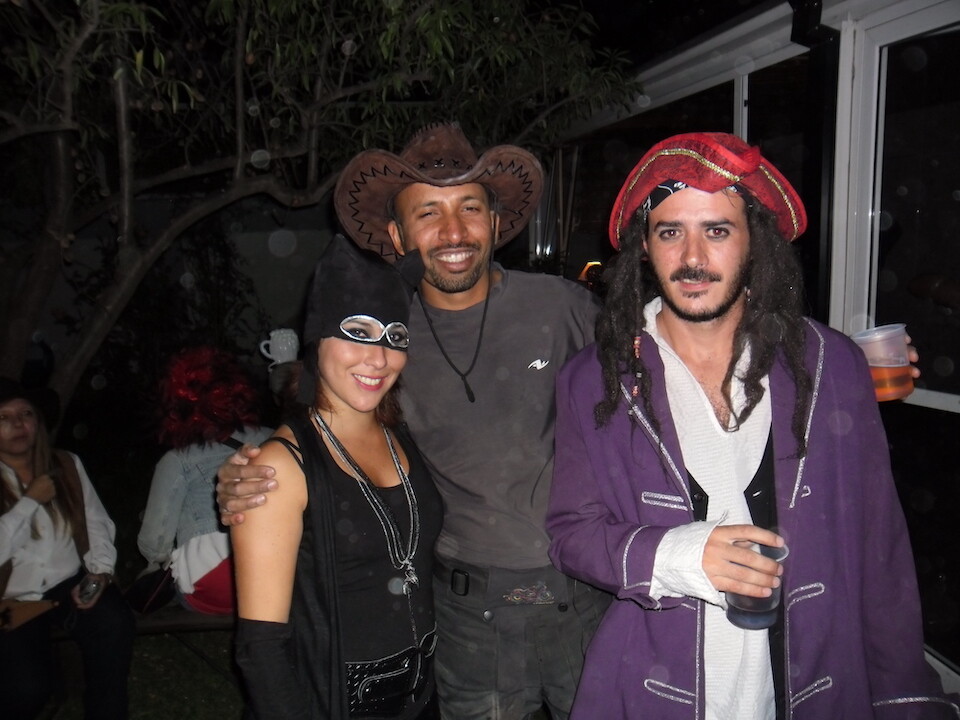
Cat girl and a pirate. Because I was coming from the US, the cowboy hat soon landed on my head. I peeled myself away at 3 am since I had a long day to Buenos Aires.

Halfway to BsAs, there's a motorcycle haven in the small town of Azul, at...
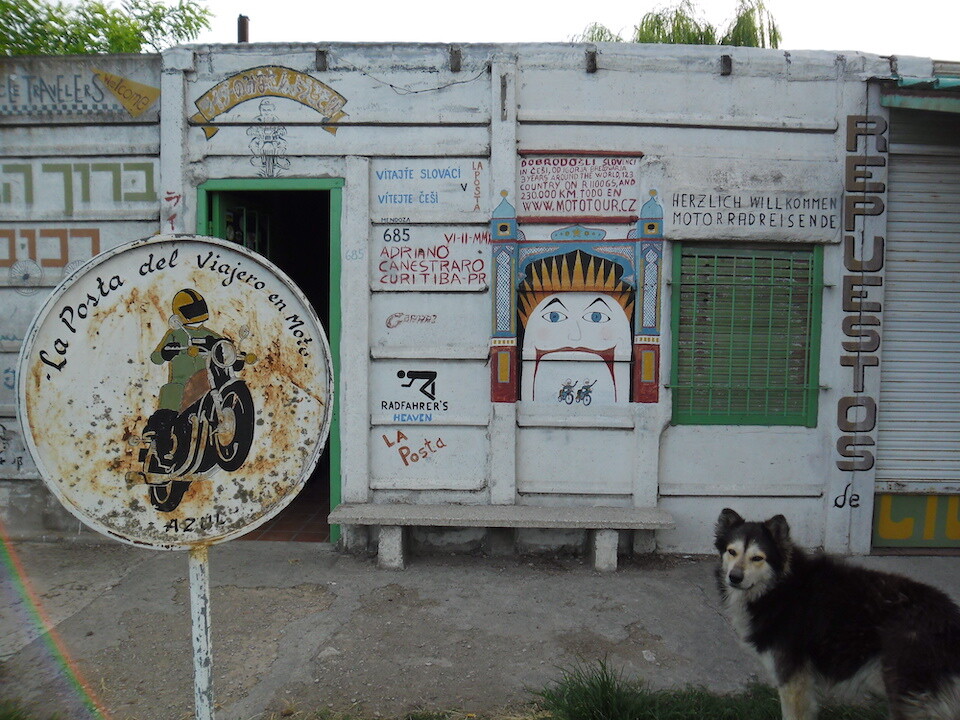
La Posta del Viajero en Moto.
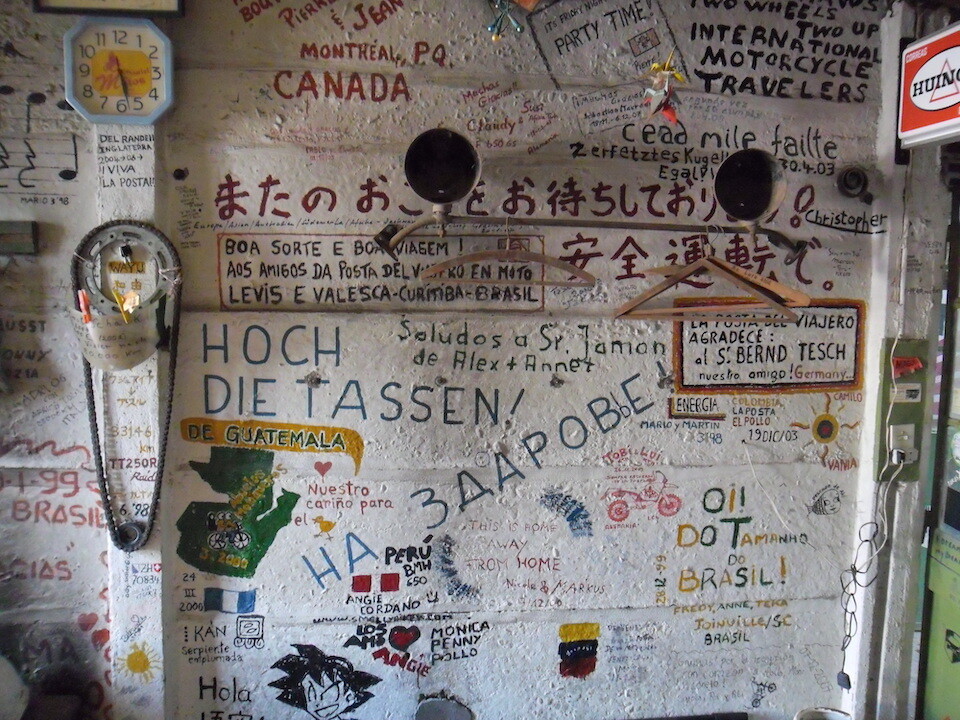
Jorge and his wife, Monica, opened up their home to motorcycle travelers in the early 90s and since then, it has become a fixture on the motorcyclist's map. Travelers from all over are encouraged to stop by and spend a few days in a place comfortable to bike travelers. Everyone leaves their mark on any available place in Jorge's garage.
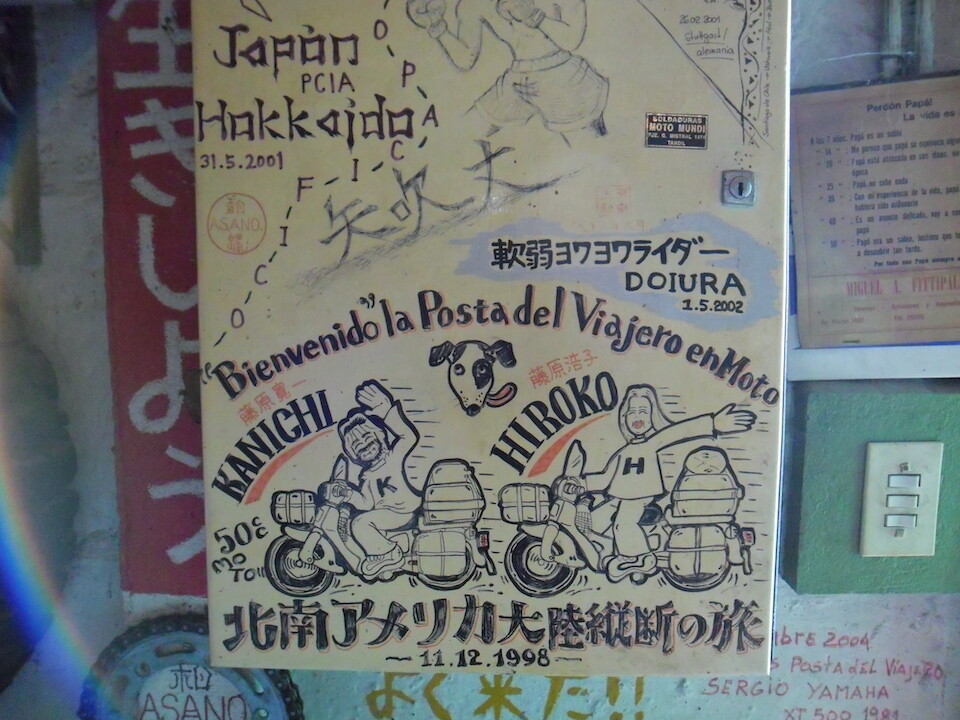
Jorge said there were a lot of Japanese motorcyclists in the years past, but lately, it's the Brazilians who are the most represented country. He said that one Indian woman stopped by here on the back of another guy's bike, but was happy to point out that I was the first Indian rider to pass through. He was so enthralled with India that he interviewed me on tape to remember the occasion.

Saying bye to Jorge after a short visit. I had to get to Buenos Aires in order to prepare visas and onward travel.
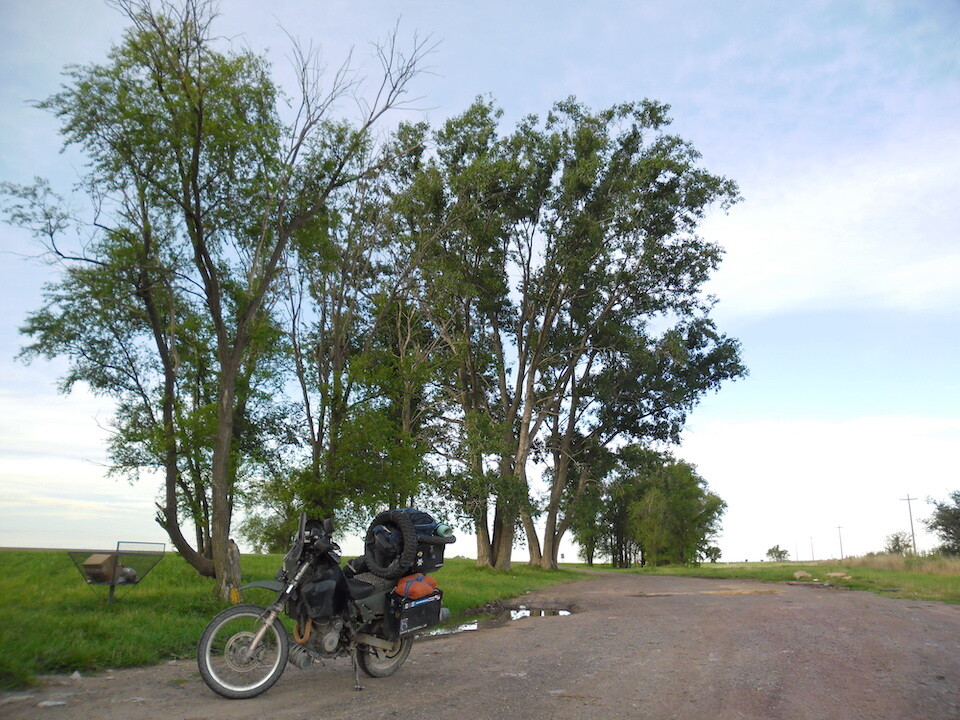
One last pit stop by the road side in Latin America and as the glow of Buenos Aires showed up on the darkened horizon, I took stock of the fact of what had transpired since leaving Chicago. This was the end to the chapter of riding in the Americas and I was thankful for all the wonderful experiences.
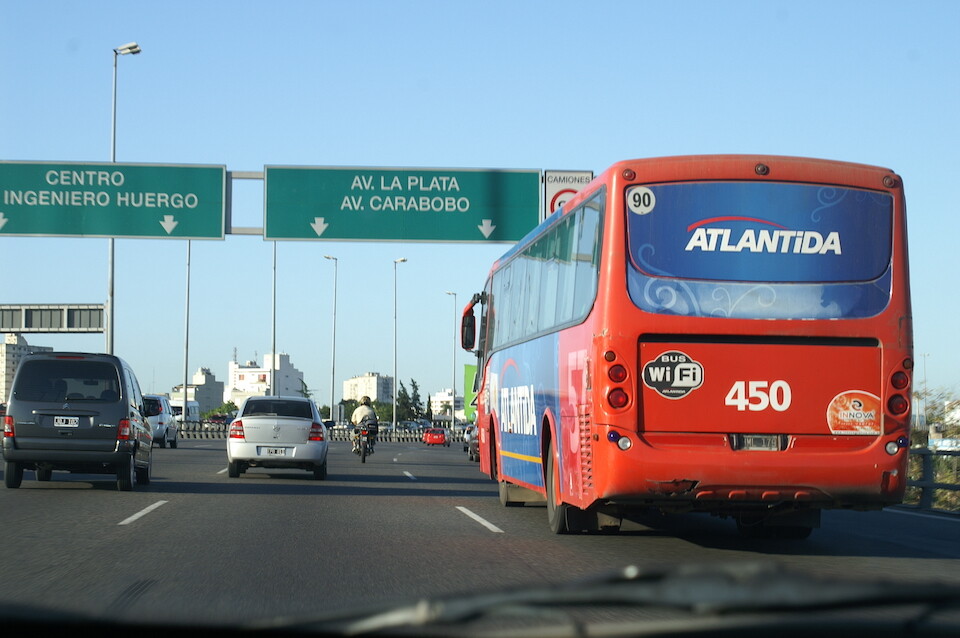
Back in a developed setting of the grand city of Buenos Aires and it's efficient freeways. Look, there's WiFi on that bus.
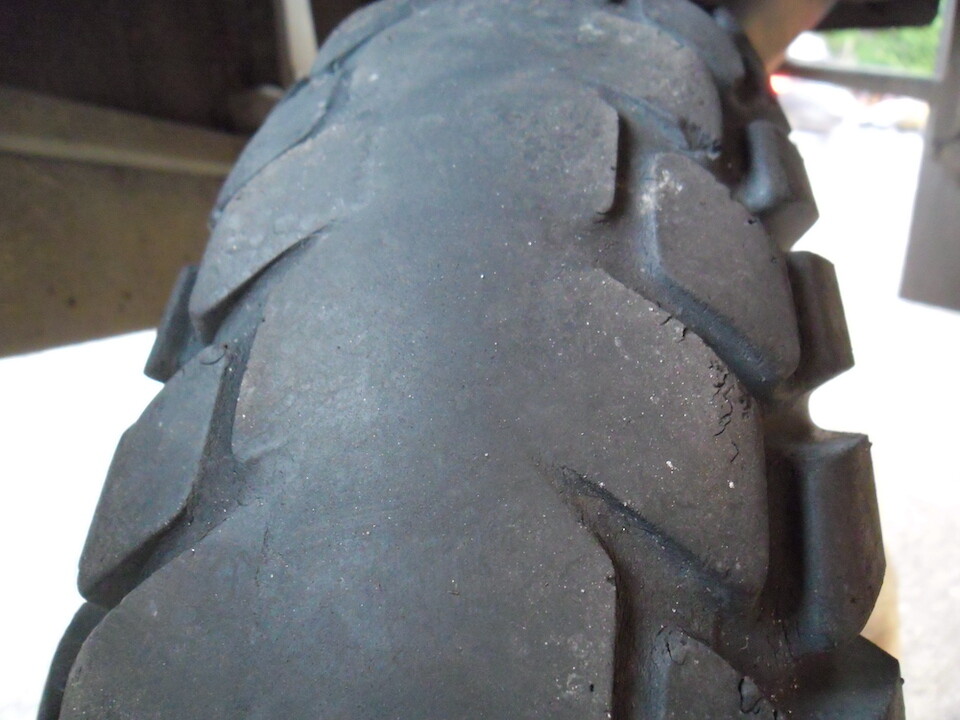
I was happy to make it to BsAs without having to change tires since Santa Cruz in Bolivia. My rear Pirelli MT 60 tire after 13,000 kms (8,075 mi) with the grip down the center all but vanished. Thank goodness it didn't rain after Ushuaia. The underlying carcass wasn't showing through, so I was still good for a few more kilometers. This was a good 50/50 tire as that's just about the kind of terrain I rode on. I was saving the new Kenda K270 that I was carrying with me for Africa and didn't want to waste it on all this tarmac.
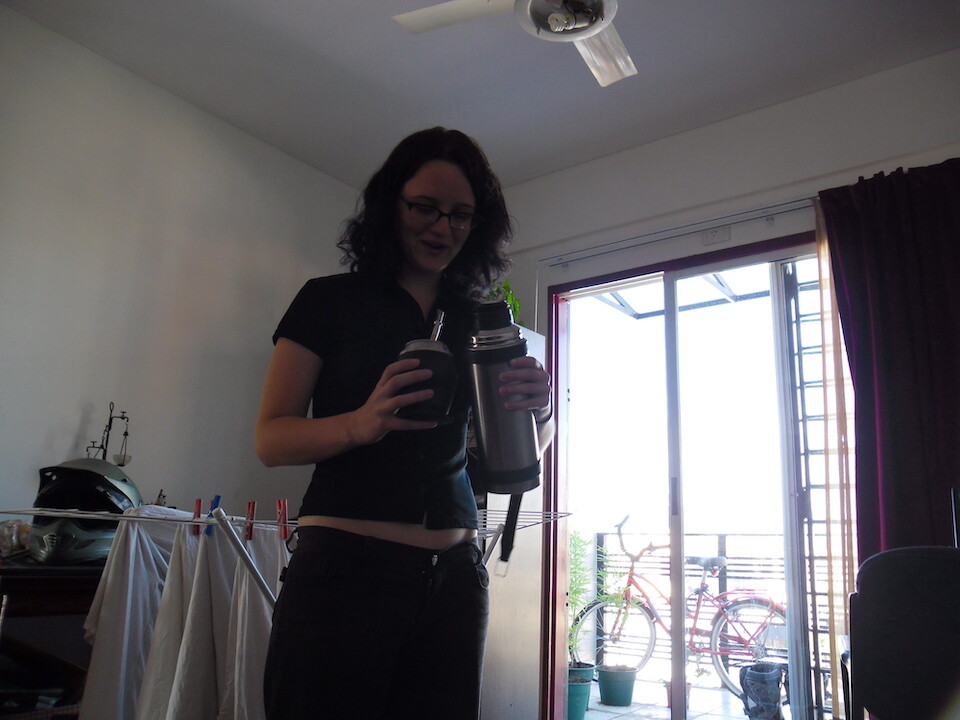
I stayed with Gaby here for a few days and she's showing me the proper way to prepare maté. It's a slightly bitter drink and there's a particular technique to wet all the leaves at a progressively rising temperature so as to reduce dust from being sucked up. She said she liked her maté with water at 79 degrees Celsius. It was refreshing to meet someone with this kind of precision about their tastes. She was a very interesting character and well read. We frequently dived in to deep, philosophical topics regarding morals, ethics and the structure of the Universe. We had differing views, but level-enough heads to hear each other out.
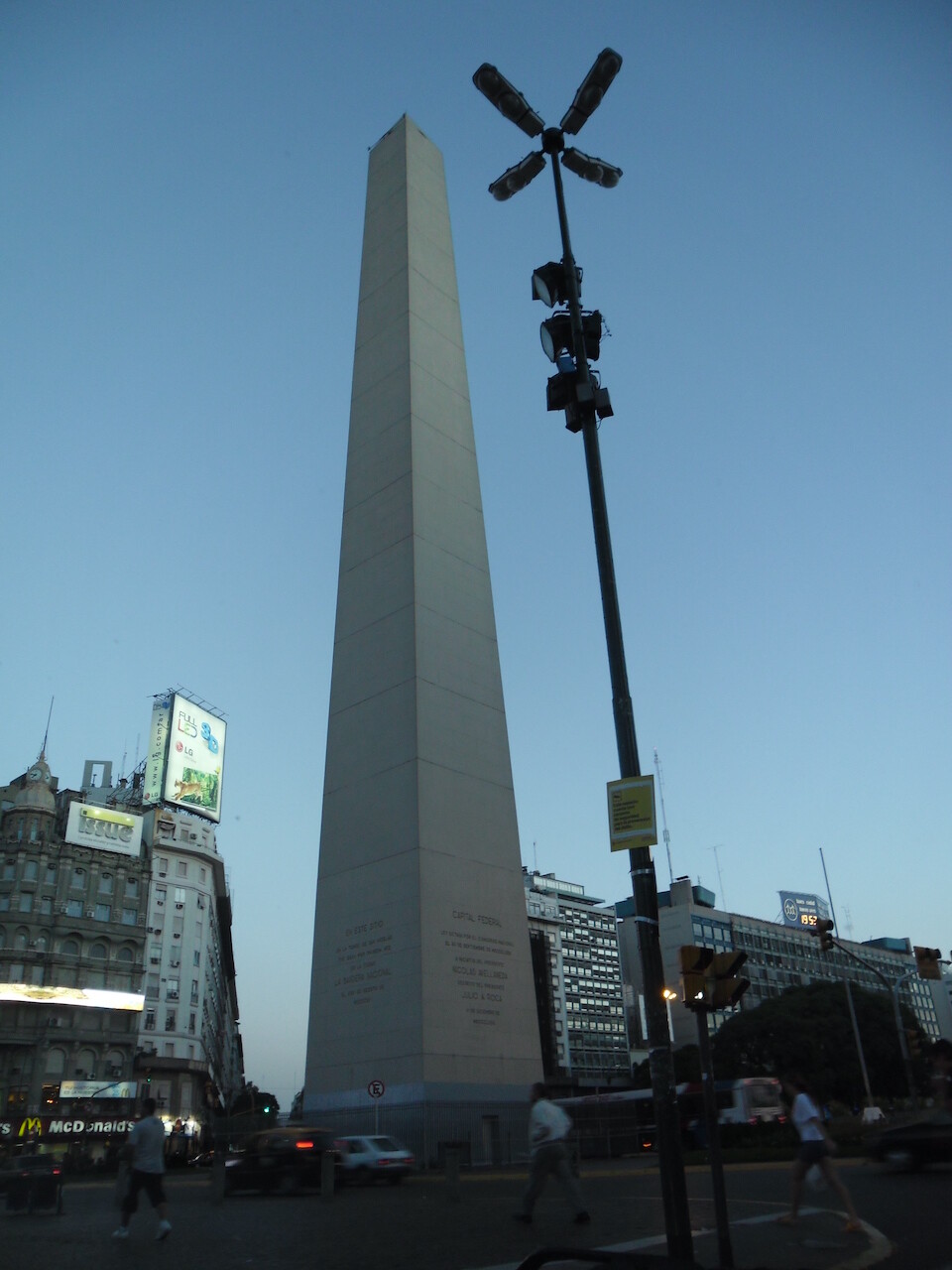
El Obelisco de Buenos Aires, the symbol of the city, built in 1936 to honor four hundred years of the city's first foundation. I was booked to travel on the Grimaldi's Grande Francia ship across the Atlantic and had to secure a visa to Europe since my plans for getting down in Senegal were no longer feasible. So, now I was heading to Hamburg, Germany and then would plot my route into Africa.
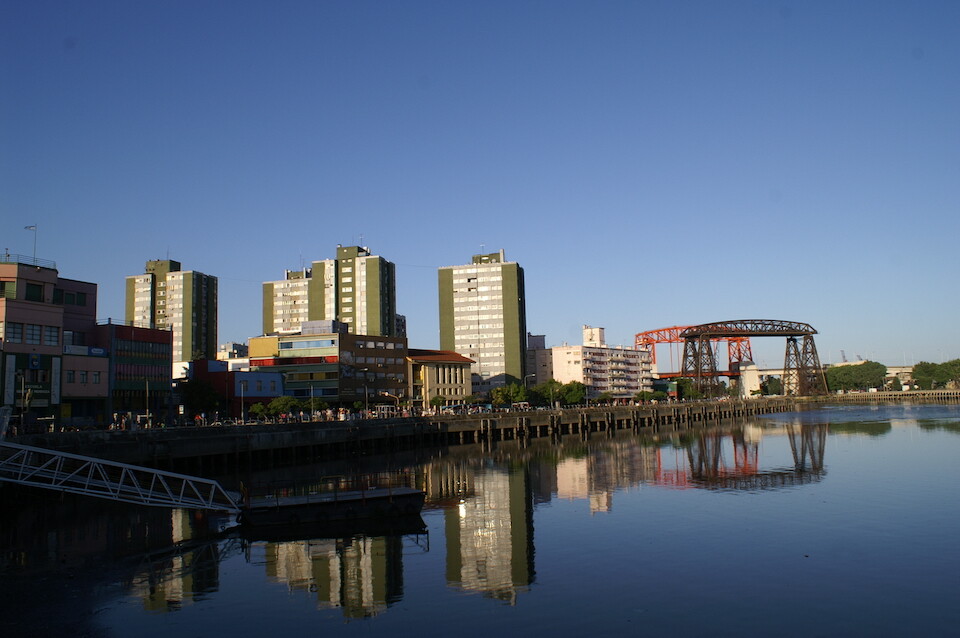
Visiting the barrio of La Boca, a distinct neighborhood of Italian descendents from Genoa.
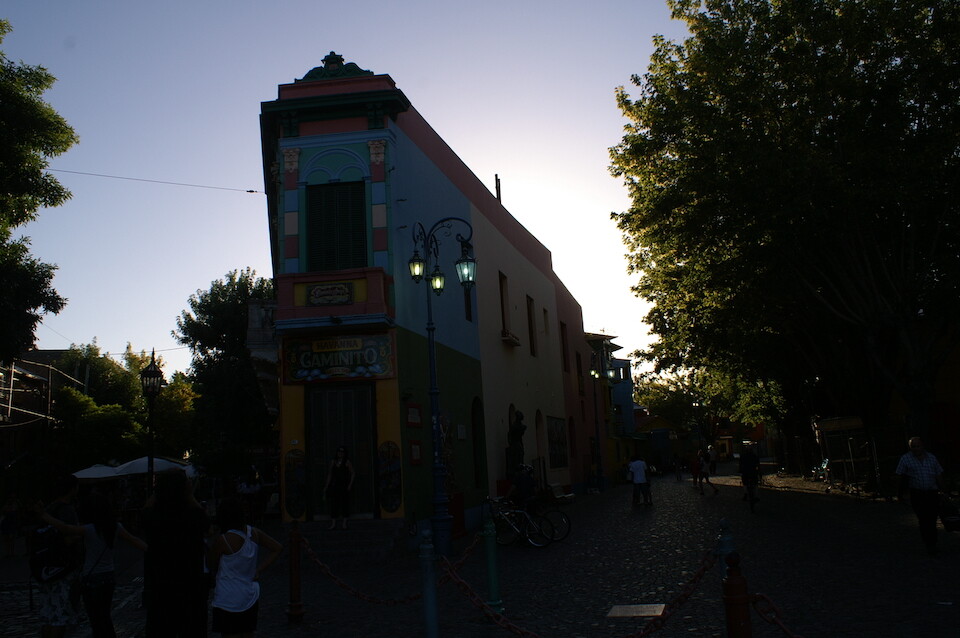
A false-color image of El Caminito, a short, colorful walkway that resident painter Benito Quinquela Martín in the 1960s took upon himself to transform his run down barrio.
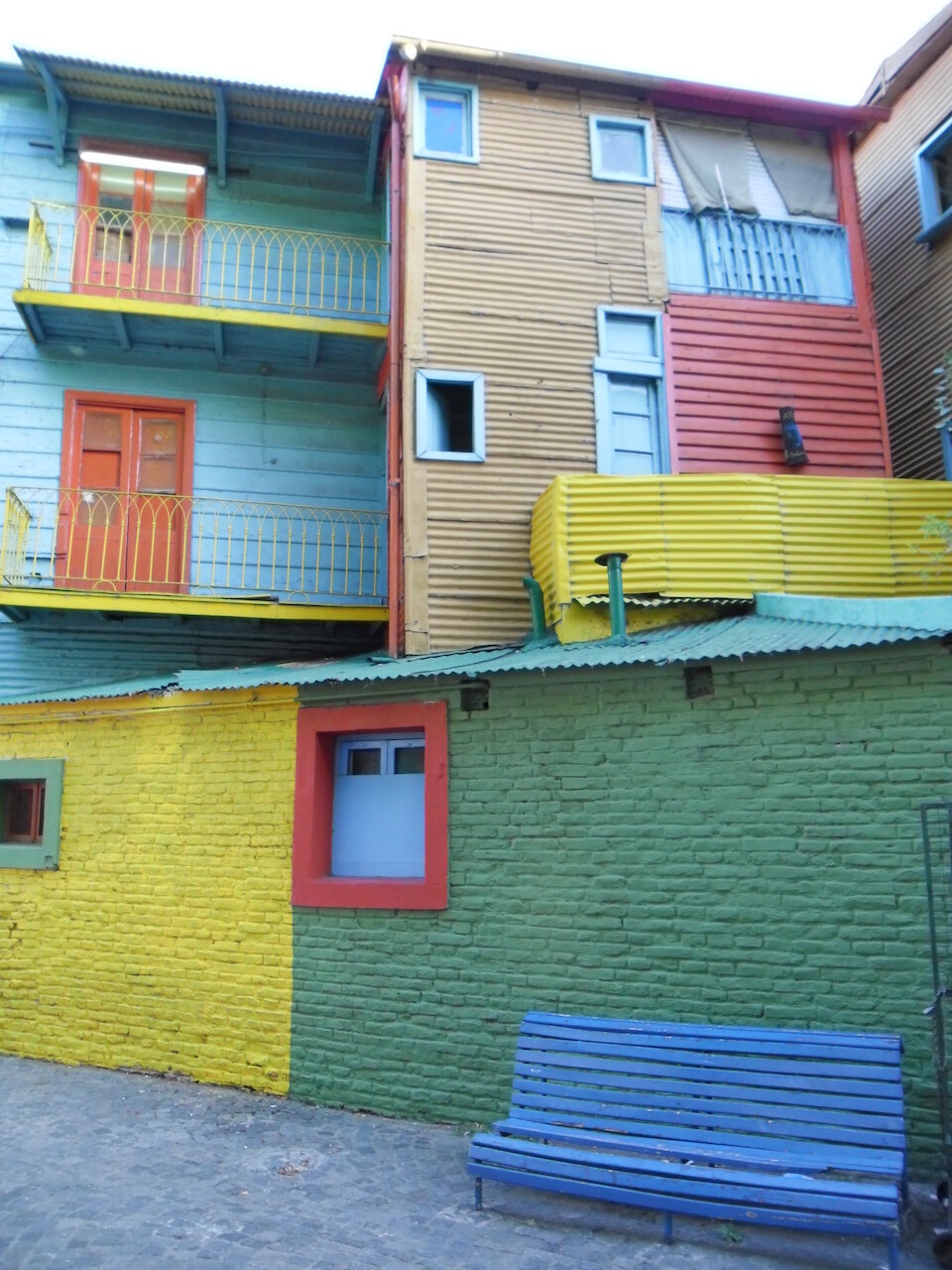
He applied pastel colors to all the buildings and brought some life back to this area. Now, it's a popular tourist attraction with tango cafes lining the streets.
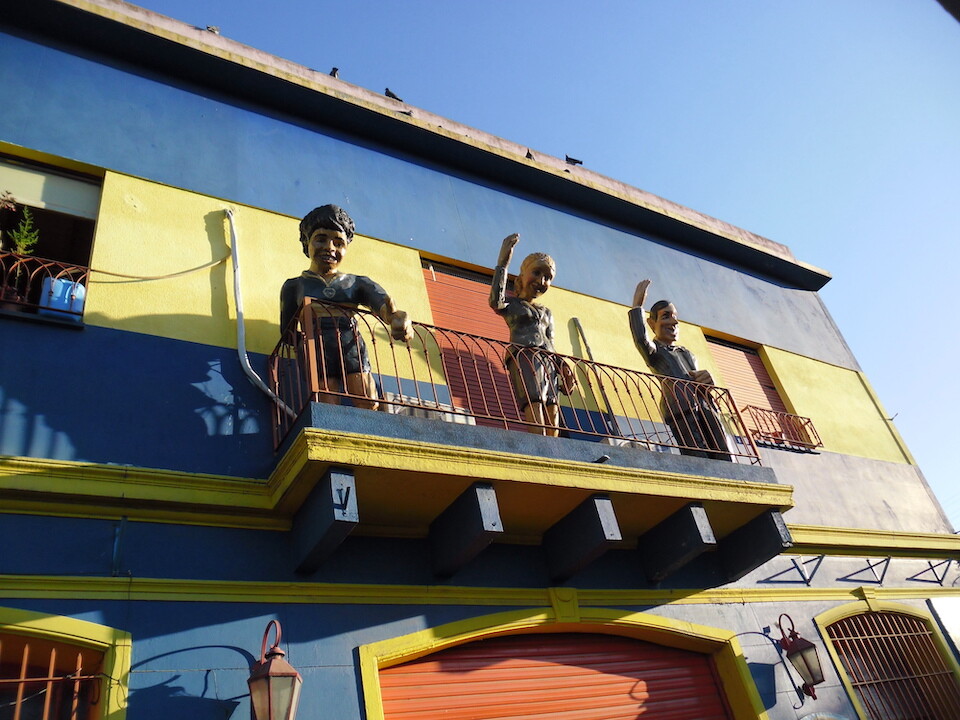
Caricatures of famous Argentines on a balcony. That's footballer Diego Maradona, Eva Perón (Evita) and her husband, Juan Perón, who is still highly regarded by Argentines.
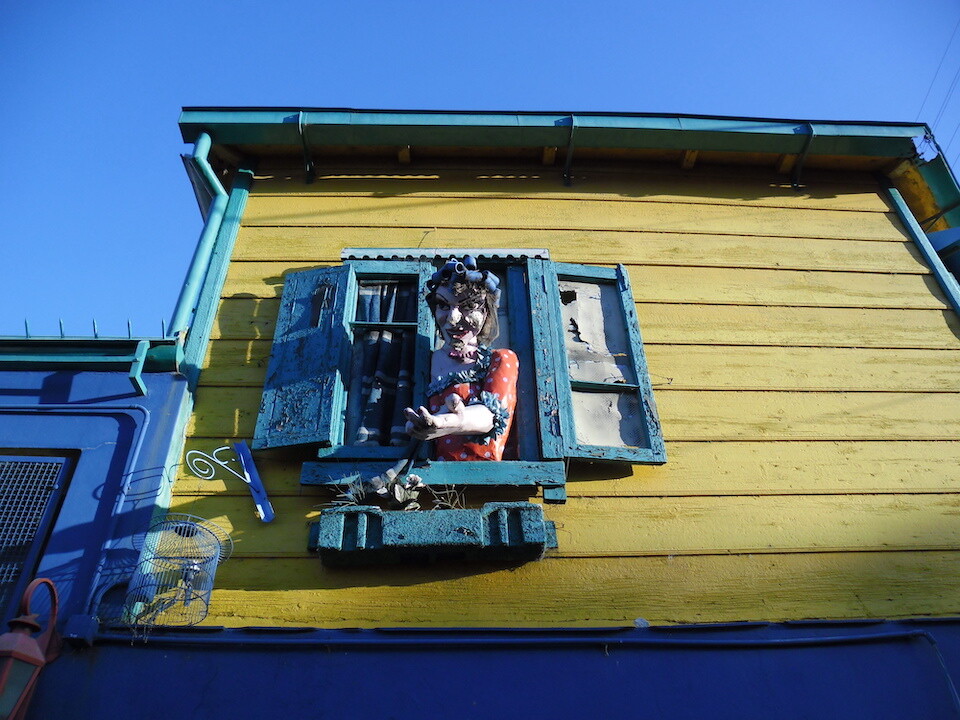
An example of the past residents of La Boca.
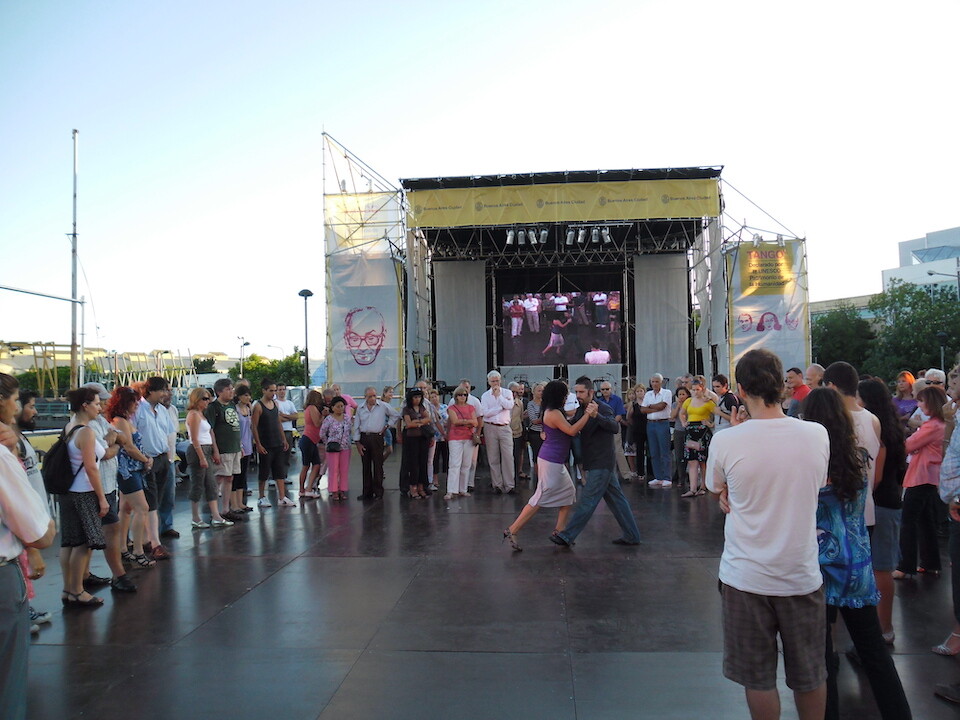
Free tango lessons by the port.
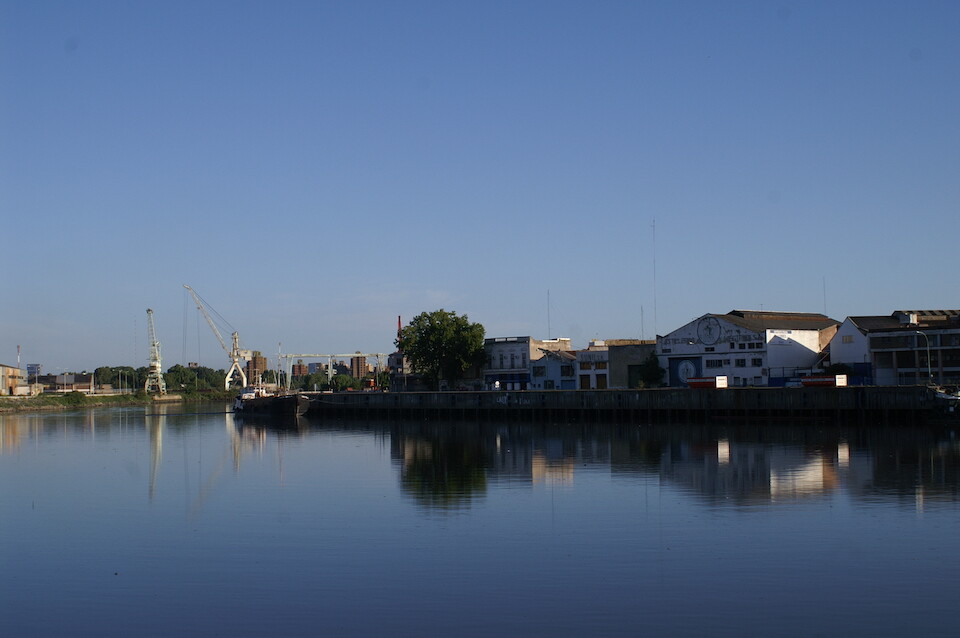
This is a more working-class area of the city, along the Rio Riachuelo-Matanza.
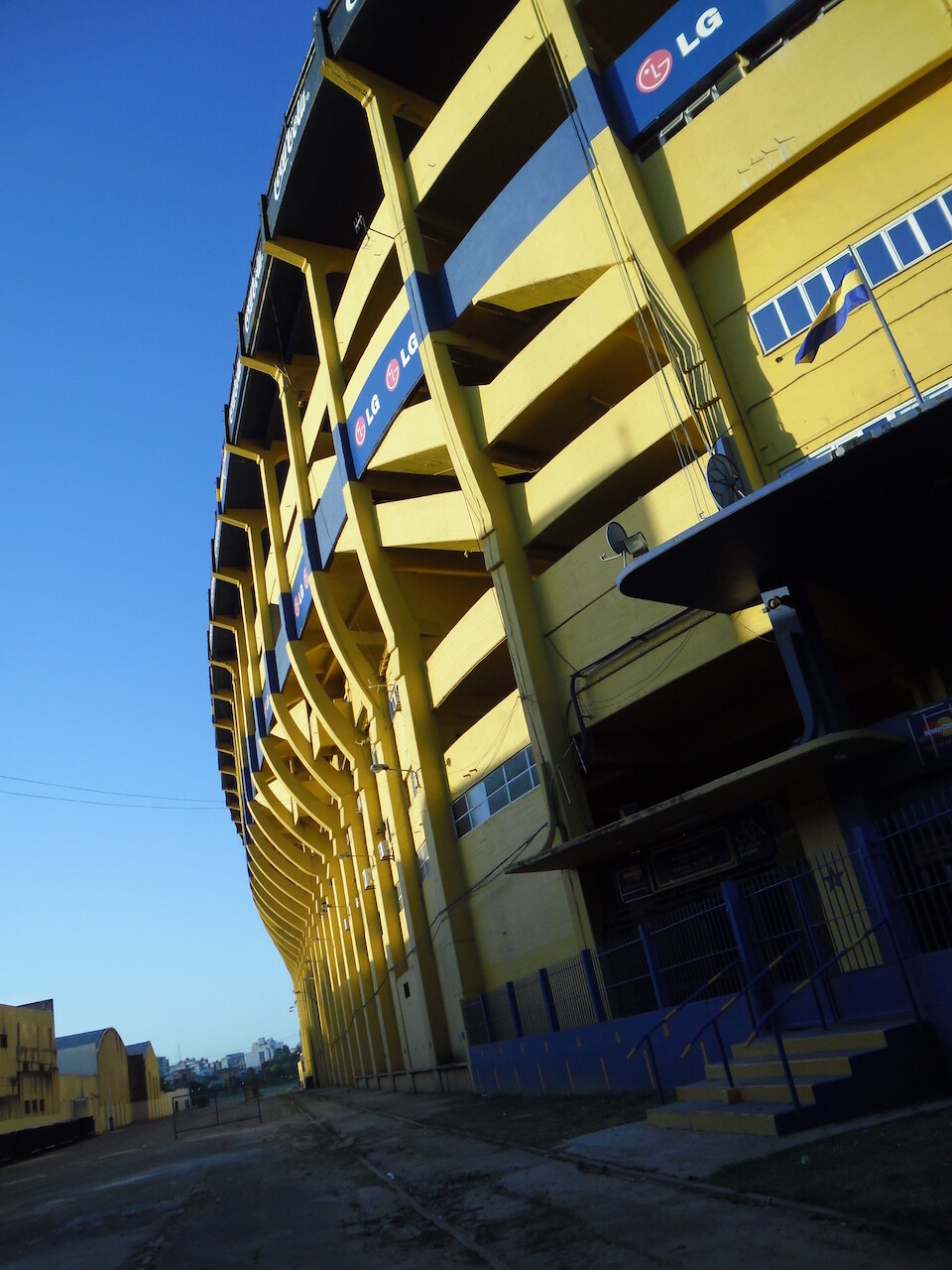
Argentines are mad about football and rightly so since the hometown team of Boca Juniors is one of the most successful football clubs in the world. This is their home, Estadio Alberto J. Armando, known as La Bombonera. The classic game is against the cross-town upper scale club of River Plate, as Boca Juniors is considered the club for the working class of Buenos Aires.
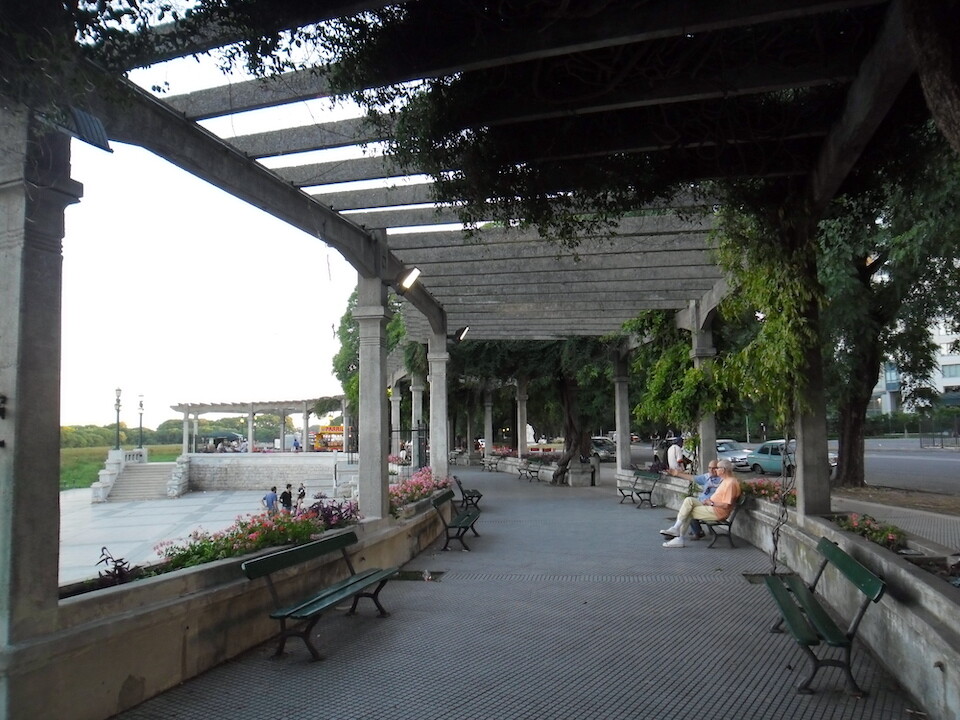
A promenade along a park. The city is very modern in places, resembling Paris and other European cities, yet, there's a laid-back feel to it as well, due to the character of Argentines.
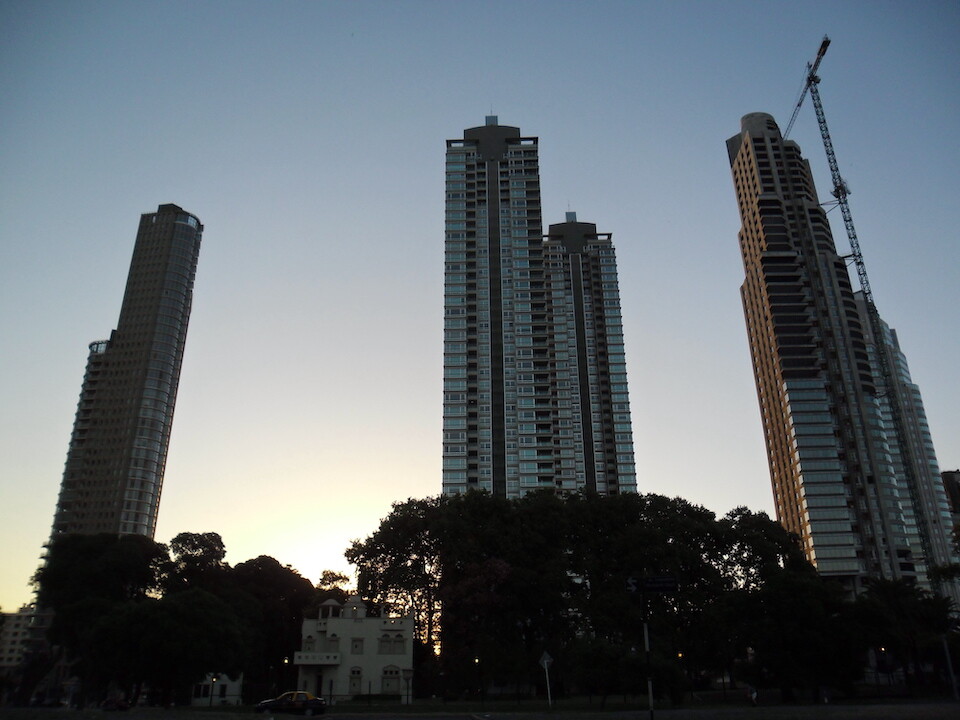
The city is booming in evidence of neighborhoods like Puerto Madero with new high-rises going up. Some of the older residents of the city don't agree with the modern construction, but that's the price to pay for keeping up with the rest of the world.
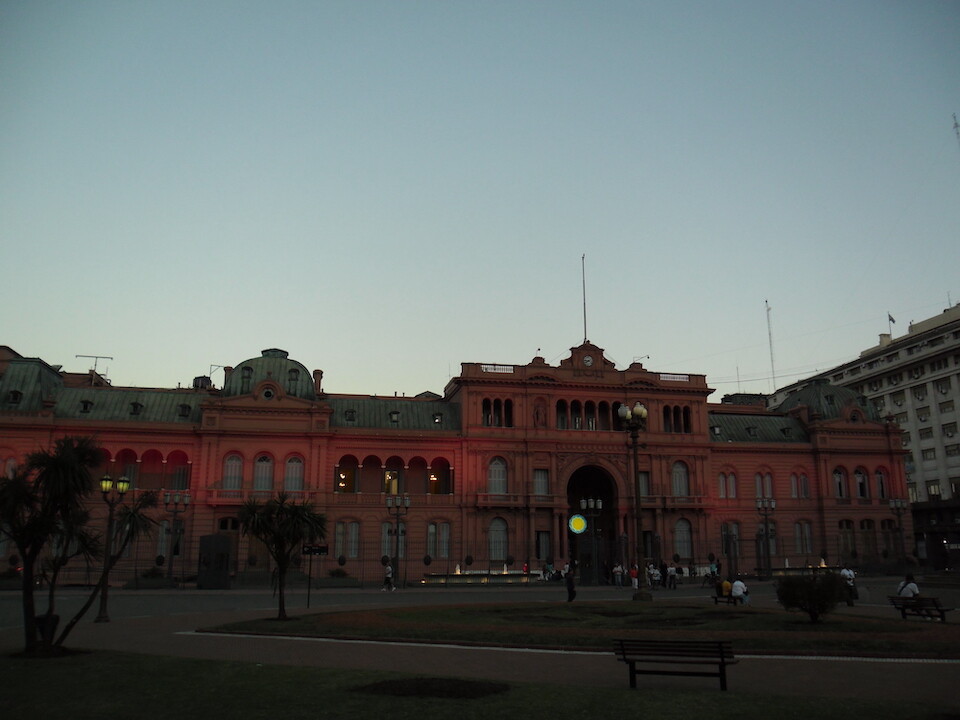
La Casa Rosada (The Pink House), the center of Argentina's colonial history through to present time, serving as the official seat of the president, like the White House in Washington, except the Argentine president doesn't actually live there, but in a nice villa outside the city. The building was painted its trademark color in the 1860s either to placate the two opposing parties by mixing their colors of red and white, or some say they used cows blood in the paint to prevent against humidity. It's a fitting color these days, since Argentina is the first country in Latin America to approve same-sex marriages, a bold move in this predominantly Catholic continent.
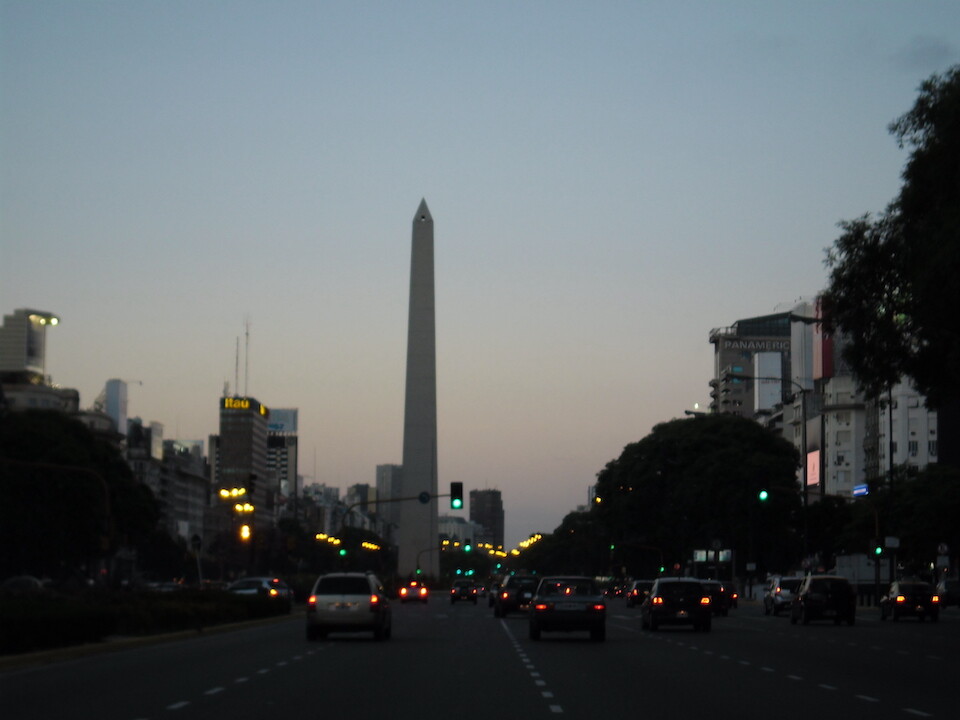
Driving down the widest street in the world, Avenida 9 de Julio, through downtown Buenos Aires. It spans a whole city block at over 110 m (360 ft) wide with 7 primary lanes going each way with an additional 4 lanes in the flanks. That's 22 lanes from end to end in the heart of a city and one can imagine that for pedestrians to cross it would take multiple traffic lights. Some people try to run from one side to the other. For sure, there's lots of traffic, but I was never in a traffic jam. The city has also perfected synchronized green lights with digital displays informing you of the start of Onde Verdes (Green Waves) and it even tells you what speed to maintain (depending on the volume of the traffic, for cars), so as to reduce the amount of braking. On the bike, I would filter to the front at a traffic light and then take off, cruising through this dense city at speeds over 70 kph (44 mph) for kilometers at a time; a real rush. El Obelisco is at the main intersection with Avenida Corrientes.
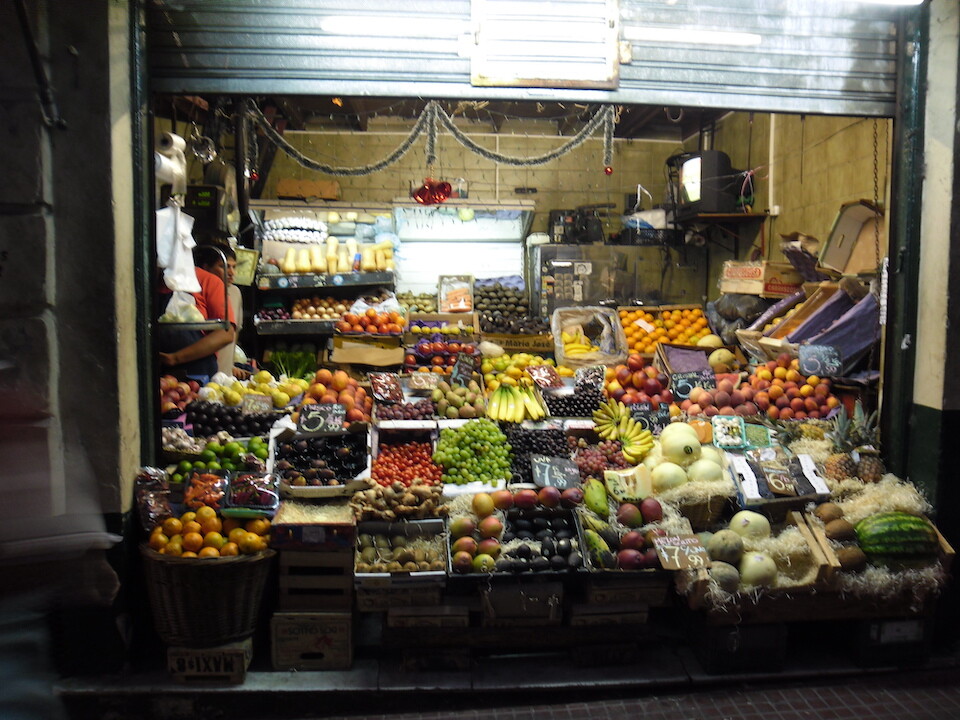
Passing by a fruit stand at the central mercado in the pleasing San Telmo neighborhood.
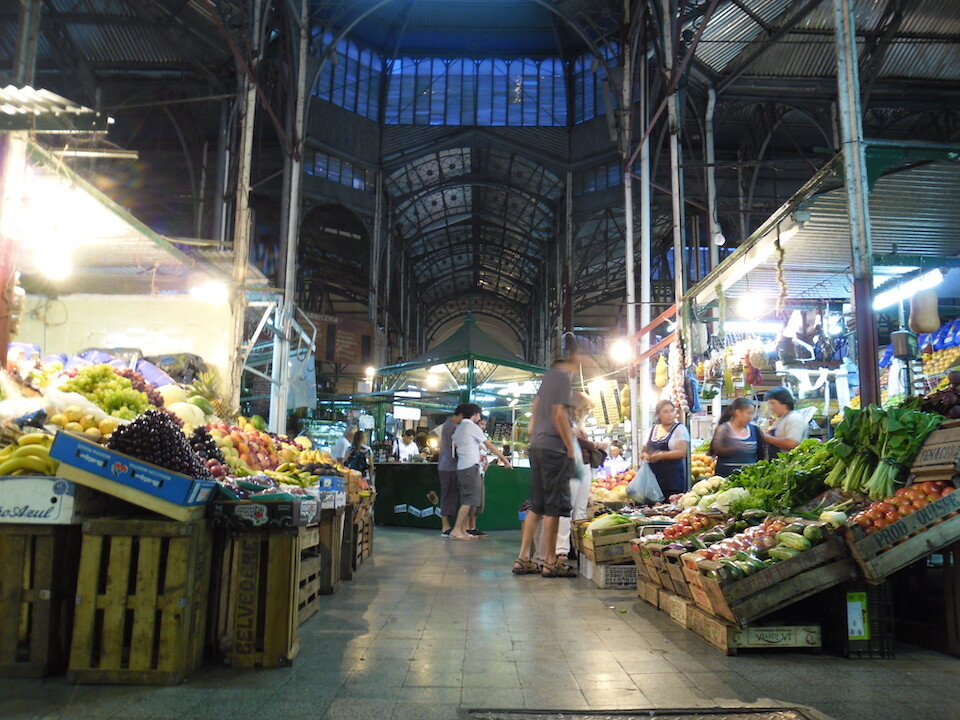
I stayed with Fernando for the last few days and we're buying some veggies for a chicken curry.
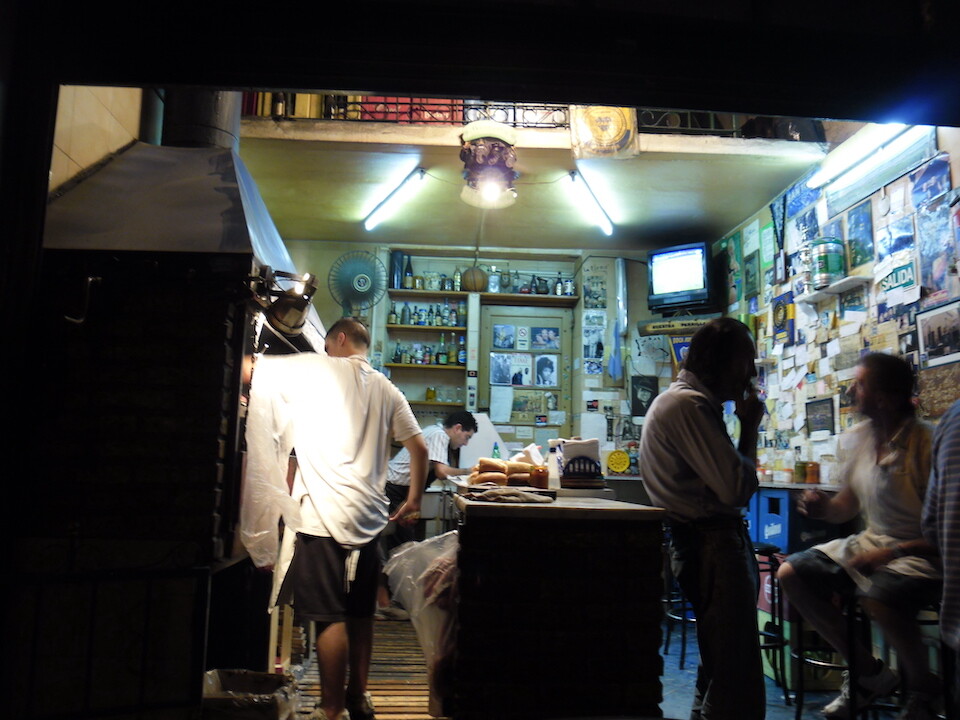
An open bar with a parilla. Beer and grilled meats.

The streets of San Telmo, the oldest barrio in Buenos Aires with well-preserved colonial buildings and cobblestone streets.
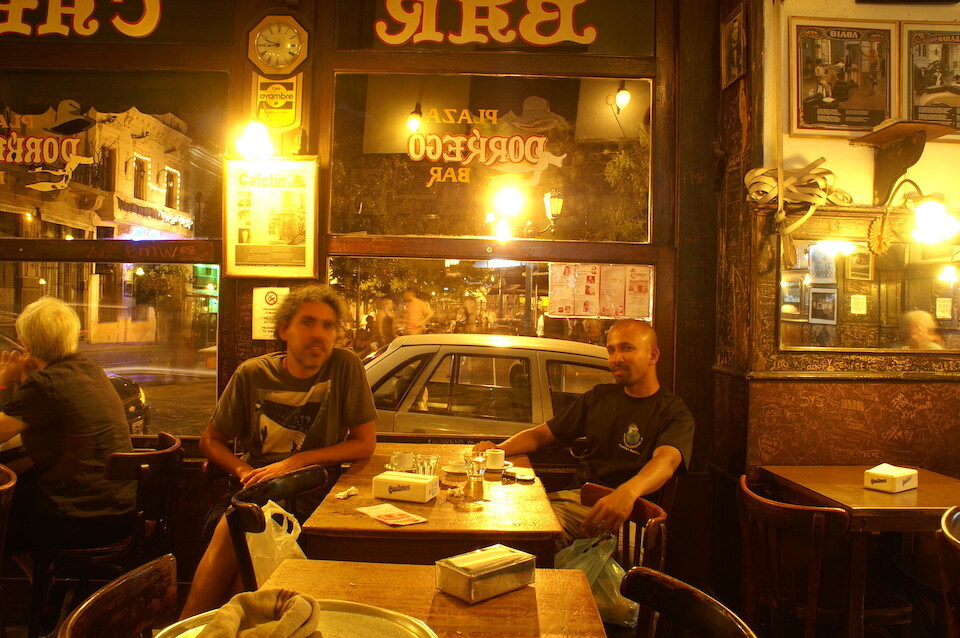
Having a coffee with Fernando at Café Dorrego, an institution in Buenos Aires. It's been open since 1880 and haunts of all the great conversations that have taken place in these walls are evident. I tried to capture the ambiance with this 30 second exposure.
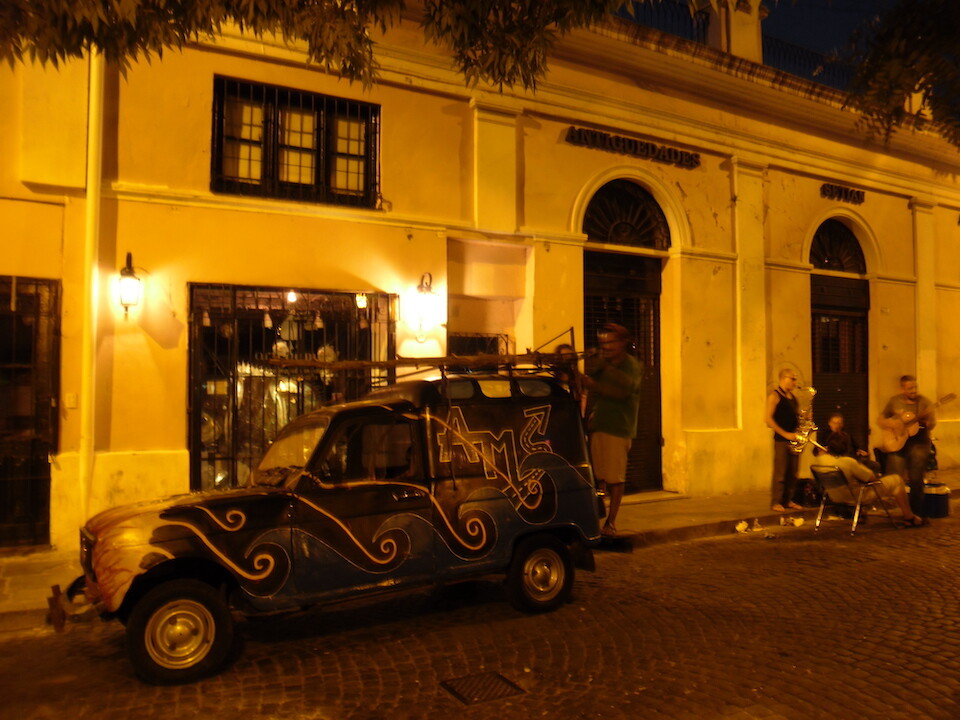
The barrio is popular with tourists and street musicians abound.

A view from the top floor of Fernando's flat in the barrio of Ramos Mejia.
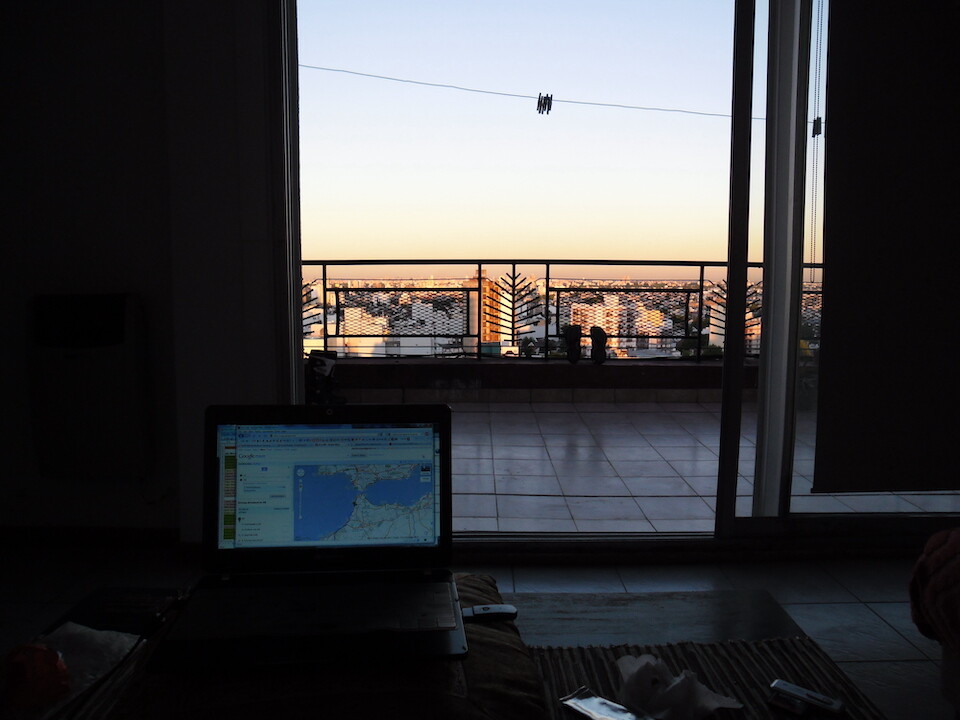
He let me have the mezzanine and I prepared for the long sea voyage coming up (no internet for a month!).
Buenos Aires is a very comfortable city and while it is massive, it's also very agreeable, mainly due to the kind nature of Argentines. The city is plugged in to the world and very cosmopolitan. It was a good place to rest after the mega miles of getting here from Ushuaia.
And that concludes the Latin American chapter of my journey that began in Mexico in March, 2010, traveling through Central America, crossing over to Colombia and heading down the Andes. From Bolivia, I went across the Amazon jungle in Brazil and then down its marvelous coast. After a second visit to Bolivia, I continued down the Andes till the tip in Ushuaia.
I had a few breakdowns, but overall, am thoroughly pleased with how sanDRina, my 1998 Suzuki DR650 has handled the trip, so far. She's a simple-enough bike that I could manage with all the breakdowns and it helped that I carried the appropriate spare parts. By now, I'm very comfortable with living on the road and have my routines down that I can keep going for the foreseeable future.
I had many ideas and philosophies of life before going into this trip and, so far, they've all been reinforced giving me confidence to keep the throttle twisted open. In all this time, I've had zero security-related incidents. Not once did I even feel threatened and I knew this would be the case if common sense was rigorously applied. I had learned from previous travelers that having a good command of the language was a useful tool and also a door to greater engagement with the locals. This proved very true and I highly recommend learning Spanish for travels through Latin America.
I met numerous wonderful people, either by chance or through traveling networks, such as CouchSurfing.org, which has been a great tool in my journey. It's reassuring to see the same kind of awareness-raising around the planet, with regards to nature and how we treat each other. Of course, this inadvertently comes with rising habits of consumption, which is the same in all developed and quickly-developing areas. Besides picking up a few bad qualities from the West, the people I interacted with were aware of the positive qualities from their culture, such as strong social bonds. I think there's something to learn from every culture to make this a more harmonious planet to live on.
Saludos, Americas.
Hasta que nos encontramos otra vez (until we meet again),
Jammin
Next: Grimaldi, Part 1: Buenos Aires up the Brazilian Coast
Previous: Patagonia, Part 6: Ushuaia, Tierra del Fuego and Penguins